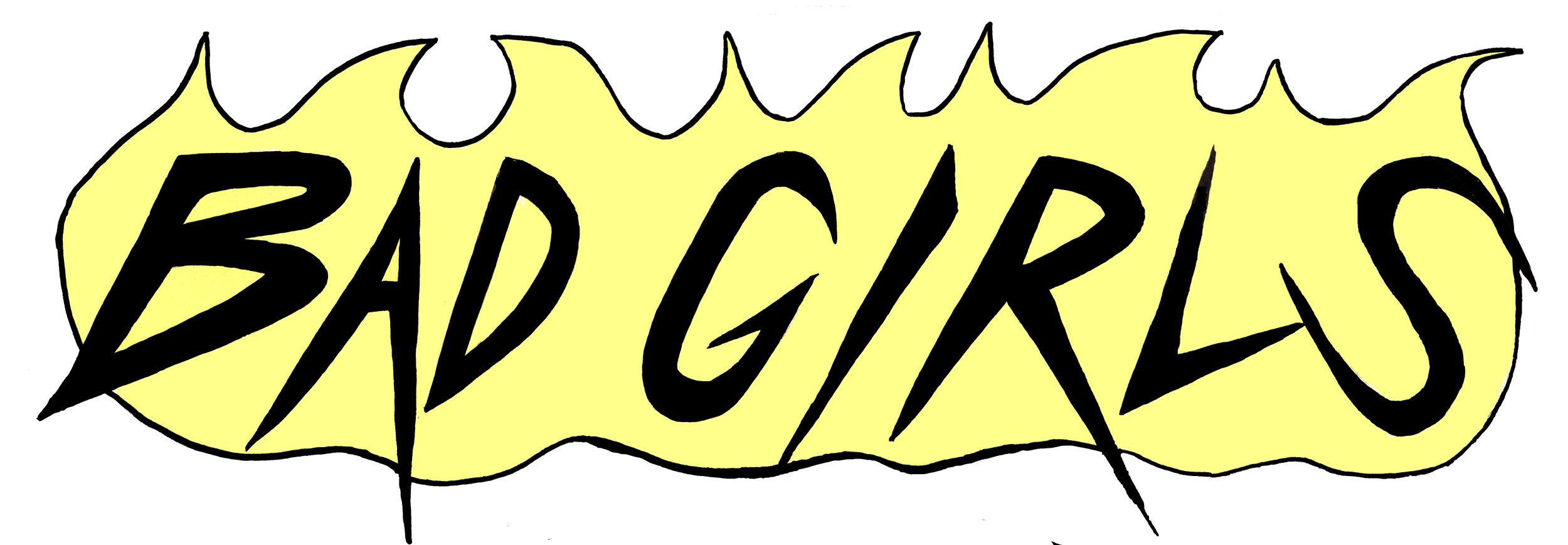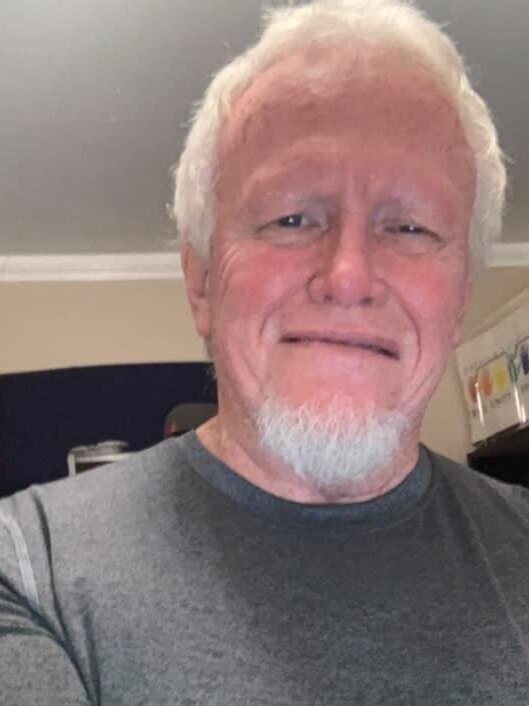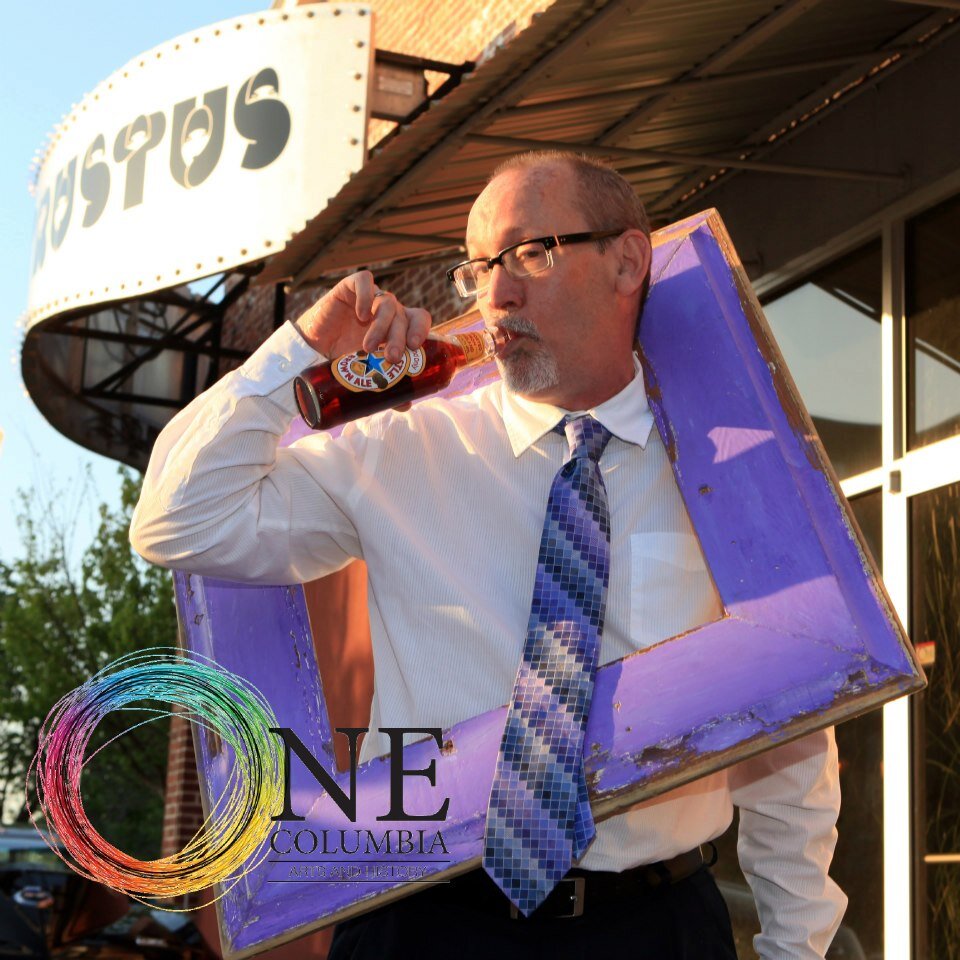JASPER: Thanks for agreeing to chat with us about your life as an artist, Idris.
Can we start with learning a little about your background like where you’re from, where you went to school, and how you got to Columbia, SC?
CHANDLER: Thanks for asking me to participate. I’m a native of Columbia, born at Richland Memorial. I went to Brennan and Lyon Street Elementary, Crayton and Gibbs Middle and Eau Claire High Schools.
“I love wooden instruments. The resonance and beauty of the material is fascinating. Something that people build out of trees makes such special sounds.”
JASPER: Who have been your biggest influences as a musician?
CHANDLER: I am a fan of so much music. I fell in love with classical music in middle school, but grew up singing everything on the radio, especially R&B, and listening to reggae which my father played constantly though I didn’t understand why he loved it so much.
A pivotal moment was seeing Yo-Yo Ma on Mr. Rogers Neighborhood. I listened to him speak so calmly about music and the cello and watched an intimate performance with him and Mr. Rogers who seemed so appreciative and fascinated. I think my parents got me a cassette tape of his Cello Suites and I was hooked. I pretty much taught myself how to play the first few weeks.
JASPER: In addition to playing cello, I know you play a number of additional string instruments, as well. Can you talk a little about that, please?
CHANDLER: Starting on the violin in 5th grade I switched to cello at Crayton and was amazed at the sound of this huge instrument. In 9th grade I picked the violin back up and even played it in the District Orchestra for a time. Having gone to USC to pursue an education degree and a performance certificate, I had to play the other string instruments (viola and bass) which I also have grown to admire, but I don’t play them as often or as well as the cello. I love wooden instruments. The resonance and beauty of the material is fascinating. Something that people build out of trees makes such special sounds. I generally play cello professionally and explore the others in my private studio.
I’m teaching myself guitar and tenor guitar, though I’m not very good. One day I’d like to own all the guitars related to bowed strings like the mandolin and madola.
JASPER: I first learned about your work when I heard Day Clean several years ago and was blown away by your technique and musicality. That was a duo with you and Marcus Thomas, right? Is Day Clean still a thing?
CHANDLER: DayClean!!!! Sorry for yelling. The duo was me and Marcus who plays guitar. He’s an amazing soul, hip-hop, lyricist and songwriter. He currently leads worship and teen ministry in Virginia. I wrote string arrangements for the album and sang backup. It was and still is my favorite thing and I’m proud because it’s good music that speaks to people. I always wanted to do more than classical music and the time with Marcus was my education. He moved a couple times, and I blame him for being allergic to creating long distance! We still play occasionally.
JASPER: Where else do you perform?
CHANDLER: COVID has made things difficult obviously, but I usually play with the Resonance String Quartet, EdgeWire Music, and several regional orchestras which this year includes the North Charleston Pops. Like many musicians, in normal times, I’m also contracted for engagements including, studio recording, and other live concerts and shows.
“Navigating the emotions of this time has been difficult. Being unable to perform with my colleagues and friends, keeping track of my family, staying healthy, then watching hundreds of thousands of people die in the richest nation in the world, questioning how a musician and teacher can be of service during this time.”
JASPER: Can you tell us a bit about your personal practice and rehearsal schedule? (I think non-artists are always surprised by how many hours/week a performing artist logs in.)
CHANDLER: These days I’m averaging about an hour and ½ a day. I’d love to play for myself more! As I’m also an educator, most of my time is spent devising curriculum strategies. The pandemic has changed the way we teach, so a lot of my work has been revising the curriculum to teach online. The entire job has changed. Sometimes when people ask what I do it seems insignificant to say I practice, research, study, write and create. But that’s the life.
JASPER: What has been one of your greatest challenges as a classical musician and how have you overcome it?
CHANDLER: The biggest challenge is making a living. I’m learning as a musician to be flexible and versatile. It’s helpful to be open to new opportunities, while being discerning about the ones you except. Being a classical musician is about being business minded, a skill that doesn’t come easy to me, but I’m learning.
JASPER: And you’re a teacher, as well, is that right? Can you talk a bit about what and who you teach, and where?
CHANDLER: Yes, I was counseled that if I wanted a career I needed to teach. Low and behold, teachers don’t get paid much. And while teaching in the public school I realized that I couldn’t perform as much. Playing the instrument that I love became the sticking point. I decided if I couldn’t perform then I didn’t want to teach. I found that teaching privately and performing is a workable balance for me. I teach violin, viola, cello & bass to students from typically 7 to 70 years old. Though recently I started a really focused 4-year-old violinist and it has been a pleasure and an education. It’s reminded me how interested I used to be in early childhood music ed. at USC but didn’t have space for it. I’ve maintained a private studio at Freeway Music studios for over 10 years. Generally, beginner to advanced students, though my most advanced students are on cello.
JASPER: I also understand that you’ve had the privilege of performing with some pretty big superstars. I’d love to hear more about your brushes with greatness – what can you tell us?
CHANDLER: Ha! Not too many brushes, but as a bowed strings musician I’ve gotten to meet a variety of artists from Ray Charles and Valerie June to Pablo Casals and Edgar Myer. I’ve also performed with Edwin McCain, Lou Rawls, Tasha Cobbs Leonard, Mannheim Steamroller, Trans Siberian Orchestra, and many more but I need to do better at keeping track. I’m not the most star struck guy. I’m pretty quiet when it comes to meeting people and doing my job, but it’s cool the stages you get to share with great artists especially when you play in the orchestra. When I was a kid, one of my few dreams was to perform on tour with Janet Jackson. Fingers crossed…
JASPER: How has the COVID-19 pandemic impacted you as an artist?
CHANDLER: I wish I could say I’ve had time to catch up on unfinished projects and self care but its not the case. As with most people I lost income as 99% of performing was cancelled and several students had to quit. Juggling which bills to pay and calling companies for assistance became imperative. I’m thankful to have an education background so teaching has kept my head above water. Many of the students were able to transition to virtual lessons, but it’s not lost on me that technology is difficult if not nonexistent for many.
I volunteer as the worship leader at church as well. Moving our worship services online has been a very difficult endeavor, with a weekly deadline. The learning curve has been steep with countless hours of trial and error. As an artist, feeling inadequate to encourage the congregation has also been a struggle.
Navigating the emotions of this time has been difficult. Being unable to perform with my colleagues and friends, keeping track of my family, staying healthy, then watching hundreds of thousands of people die in the richest nation in the world, questioning how a musician and teacher can be of service during this time. It’s been a huge weight. I’ve had to trust that God will work for good even in these difficult times.
“I have however, experienced racism in spaces where I am known as well, but it’s South Carolina so you get used to it.”
~~~
“As I’ve gotten older, I’ve realized that not seeing yourself in the world has been a hindrance.”
JASPER: Have you found ways to problem solve some of the constraints COVID has presented?
CHANDLER: I’ve pivoted to different aspects of the profession including arranging and composing and keeping my chops up so that when restrictions are lightened, I’ll be ready to play. Also outlining ideas and creating pages for a string method book, creating videos to use my YouTube page better and overall trying to figure out how to make more income with the skills I have. It’s so tempting to want to pivot to a different field or add another hustle, and maybe there’s a time for that; but one of the pitfalls of being an artist is doing too many different things, and I definitely succumb to that. Being a classical musician requires more creativity due to its place in our culture. I’m trying to stay open to the possibilities.
“It’s difficult to be a classical musician unless you have means. So, wealth inequality keeps black musicians from the profession.”
JASPER: What are your thoughts about being a working artist of color in the SC Midlands? Does the community of artists in general give you the support you need? If not, where do you get your support? Your sense of community?
CHANDLER: This is a difficult question. The classical community has been as “supportive” as it can be; they know me because I grew up here. I have however, experienced racism in spaces where I am known as well, but it’s South Carolina so you get used to it. In college I had teachers who were outwardly racist toward me for which I had to receive counseling. It was where I “learned” that those that have control over you can determine the outcome of your circumstances. I also had very generous professors for whom I’m very grateful.
It’s been a solitary existence. I’ve struggled with being one of the only black male string players working in Columbia. I can count on one hand how many there are. As I’ve gotten older, I’ve realized that not seeing yourself in the world has been a hindrance. Without “stars” to reach, some personalities can languish in mediocrity, in the median, waiting for someone to tell them they can do “it” or recreating the wheel because there are few mentors. I wish it wasn’t like this, but it’s human. I want to grow to be an artist that sees what hasn’t been and isn’t afraid to try. I need to work smarter, not harder.
I believe that if SC and more locally Columbia wants to be a thriving city, that locals and tourists enjoy it will need to support the arts and entertainment in a more substantive way, by supporting artists. A specific issue that I experienced was not being able to find affordable housing. It took me a year to find an agency that would rent me the cheapest apartment I could find in a pleasant area. There is a lack of concern for artists in this regard. If artists can’t find affordable housing it must follow that they won’t be able to live here and add to the culture of our city. I’d rather not argue about the profession that I chose and my work ethic as I’m sure many readers will immediately question. Being an artist is a profession that has always required a bit of subsidy and/or help from patrons. I just hope that Columbia isn’t a place where only those that can afford to be artists; that come to the table with a level of wealth can make it work.
JASPER: How prevalent are classical musicians of color? How do the challenges of being a classical musician differ for artists of color – or do they? And if they do, what are your recommendations for meeting these challenges?
CHANDLER: There are more and more of us. In my opinion being in the classical music industry is difficult for everyone involved. It is a niche that is only now beginning to appeal to a wider audience mostly due to those entertainers who are trying to expose the art, with more contemporary styles and genres. However strictly “classical” music is still an artform that needs to be considered an investment not for its revenue stream but for its cultural and spiritual significance to our society.
It’s difficult to be a classical musician unless you have means. So, wealth inequality keeps black musicians from the profession. In fact, I’ve counseled students to be discerning when considering music as their only career option, for fear that they’ll have some of the same struggles that I’ve faced.
More positively I’ve participated in a few Black Classical Conferences like the Sphinx and Colour of Music organizations and its really nice to see you’re not alone; so nice to sit next to someone that has had similar experiences, someone you can look up to, or help inspire.
“I think it’s interesting that we pay so little for art, but the tools of the trade are so expensive.”
JASPER: As a culture, what needs to happen for us to see more young men and women of color pursuing careers in classical music?
CHANDLER: Columbia has a history of providing string education, particularly in the public schools. We should have more black musicians performing after high school. Many of things I’ve mentioned are barriers to this. Access to quality instruments is important. I got into a disagreement some time ago with a lawyer who claimed that anybody can succeed in this field if they work at it. I proposed that without means its difficult to pursue this career. The students that cultivate the best sound usually have a good instrument, whether they purchase or borrow it. Most black students borrow their instrument if the school provides it, or they don’t play. In most cases it will be the cheapest instrument the district deems it should spend, which won’t sound good and will not encourage the best from a student. When the year is over, they return it. The end. Communities that value this art form invest in it.
I think it’s interesting that we pay so little for art, but the tools of the trade are so expensive. Owning a good, bowed instrument is like owning a car. I was trying to explain how expensive quality instruments are, including all the accessories and maintenance. I’m grateful for being given the opportunity to acquire an instrument through many donors when I was in college. It’s an intermediate cello that I play professionally, a $4000 instrument and bow that I still play to this day. Where would I be without the generosity of thoughtful patrons?
We also need to be able to make and see more opportunities for success. I pray that the biases of the business community don’t make it hard for black artists to present their work and make a decent living doing so. Classical music is a small niche. It’s not beloved and sought after in the popular sphere. There are unique challenges for an art form that is in the minority culturally. Let’s take this a step further. Are rap artists, whose art informs popular culture, being given a chance to showcase their art in Columbia? When they are, are they treated equitably? More widely are black businesses being prejudged for the clients they might attract? Is it assumed that a black artist will not provide a quality experience? Are black artists being admonished to succeed without avenues to hone their skills? We know that white entrepreneurs are allowed to fail, but if they are black the judgement is disproportionate, and second chances are less likely. I wonder sometimes if I play less than perfect if I will be called again. There’s a level of doubt and anxiety that is perpetuated by all the things we encounter as black artists. It takes a lot to be confident under the pressures of this culture. I don’t have all the answers, but we can at least consider these types of issues when we are planning events and making spaces for artists.
When people move here, the complaint I here is that there is a lack of diversity and variety in the arts and entertainment. Could we be missing out as a city? I can’t speak for other groups, but I believe and will espouse that South Carolina has a special responsibility due to its past, to check racism, biases, and judgement in the continued effort to support black communities. In my opinion we should be given, yes given, more education, guidance, grace, and support because of the history of white supremacy in South Carolina.











































































